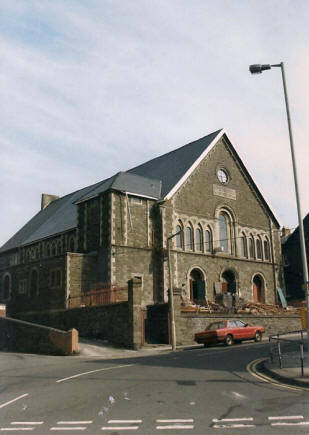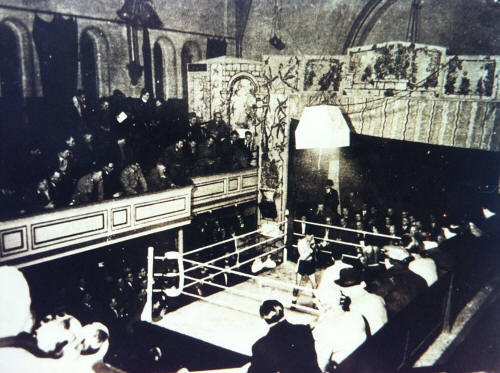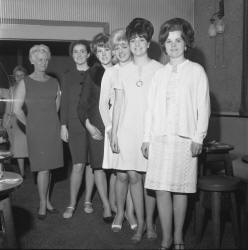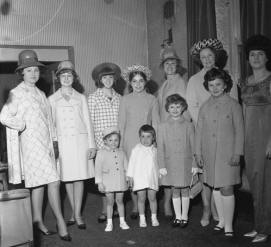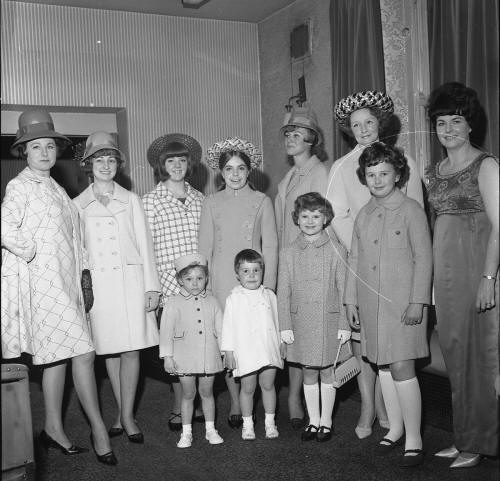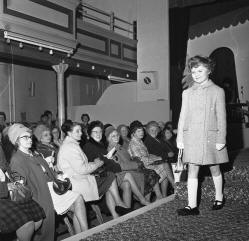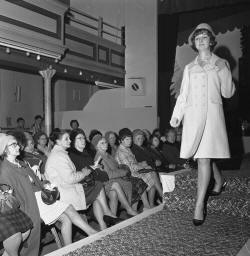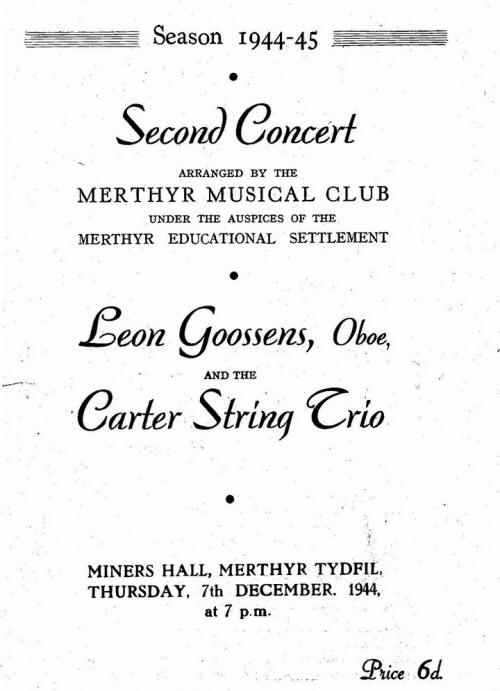|
It
was erected on the instruction and financing of the Welsh
Wesleyan Methodists and it was named Shiloh Chapel.
The year of construction was 1853 and it was allegedly
designed by I.K.
Brunel. Other 'Shiloh1 Chapels of the same
persuasion operated at Cefn Coed and Dowlais.
Full
religious functioning were carried out through the sixty
years of its denominational life. Surviving residents of
the Borough recall their wedding ceremonies and their vows
taken inside the old building.
Regrettably by 1920 the time had arrived when support
from the flock,
which with breakaway groups and proliferation throughout the
years, was insufficient to maintain repair and upkeep.
Consultation between the Trustees and the Miner's Welfare
Committee
resulted in an agreement for purchase, at a price
of £1,600. Shiloh passed into the ownership of the
'Miner's Welfare'. A bronze plaque mounted alongside on
the front entry door reads "with the assistance
of the Miner's Welfare
Club", by the next year a concrete plaque
impressed "Miners' Hall
1921" was mounted centrally above the two front
entry doors.
In the meantime the square sectioned tower which was
mounted by a
slated, four sided spire was modified. The spire was
removed and
a
flat roof was constructed at eave level.
Inside the Hall contained the conventional features of
chapel design -a veranda ran around the three side, leaving
the north wall to accommodate a stage - the width of the
building.
Since 1921 it has lead a very chequered life. In the
earliest years the problems and strifes within the coal
industry ensured that political themes dominated the
gatherings under it's roof. They were frequent,
fervent and sometimes
very noisy. The name mentioned most frequently was
Kier Hardie - the most prominent reference was "The Kier
Hardie Memorial" an annual event where the gorge of conscience would
spill over and flood the congregation with rhetoric
on the injustice of the coal owners and reasoning appeal to
continue the fight.
Children would be dragooned into patiently holding a
pole, one each side of
the stage, and the blazoned banner "Keir Hardie Memorial"
held taut between. Proceedings normally lasted tW3 hours
and the children - in spite of the odd relief -
decked out in their scarlet sashes - symbolism of socialism
welcomed the end of the proceedings whether this form of
child indoctrination succeeded is open to
considerable doubt.
A
list of formidable speakers was always to hand and
foremost of them were A.J.
Cook and Jimmy
Madion
with his pallid
drawn face and long
dark hair. Some of the less well established orators,
mainly of local origin, were most difficult to subdue or
contain and often done their
cause more harm than
good. Election meetings, policy committees,
polling day headquarters often made their home at the
'Miners' . R.C.
Wallhead, with his
hoarse, but emphatic Anglican accent, would rail
the opposition and bring the house down - no wonder the
votes he attracted were invariable of avalanche proportions.
As
part of these emotional scenes recitals were held with a
Russian refugee violinist
named Soremus whose soulful and sometime melancholic
recitals would be listened in the respectful silence of
appreciation.
A
wide variety of events afforded pleasure and accommodation to
a wide public: school
gymnastic displays, Jewish wedding reception of
magnificent proportions, speech days, evangelical
gatherings, choral and glee party concerts, auction
sales, all-in-wrestling and eventually
in line with changing
customs the "Miners1 became the 'Miners'
Welfare Club" who obtained the appropriate licenses to
ensure the need of the
'Bingo' players could be satisfied.
Probably the most enjoyed and long lasting and regular venue
were the "dancing classes" in keeping with human behaviour
the Saturday night wrangling
on the old Plymouth Railway which ran alongside the
building, became an accepted Saturday night feature
resulting in many an appearance in court on the following
Monday. In spite of such high spirited and challenging
behavior it could be said that two generations of Merthyr
youth were able to carry and recall many happy evenings at
the "Miners".
After 122 years and the evacuations of the 'Miners'
Welfare Club' signs
of neglect and decay were evident: foundation stonework
and sections
of
the facade had lost quite a degree of cement and mortar
mix and badly required fresh pointing: paintwork was
peeling and grass grew
freely at doorways and the foundation and several windows
had been broken.
Any amenity which has provided so much pleasure to so
many people
for
so many years has a right when
abandoned by it's
public, to demonstrate disapproval by exhibiting the
disheveled, wear worn and
shabby appearance to the world at large
Not
to be out done it now commences another era under the
banner "Charbonnier" - far
removed from Shiloh and the Miners' Hall. Such
a name conjures up the
'can-can' and other things French. The decor and
fittings - with the help of modern plastic technology has
been transformed. The
modern needs of dining out, cavorting to disco, being
rendered to
hallucination by psychedelic a, hearing impaired by way
out decibels are met in full.
One has to wonder what the old miner with his box and
jack? Yorks
around his moleskins and his thirty eight bob a week
taking home
pay
would have thought about it all. |
